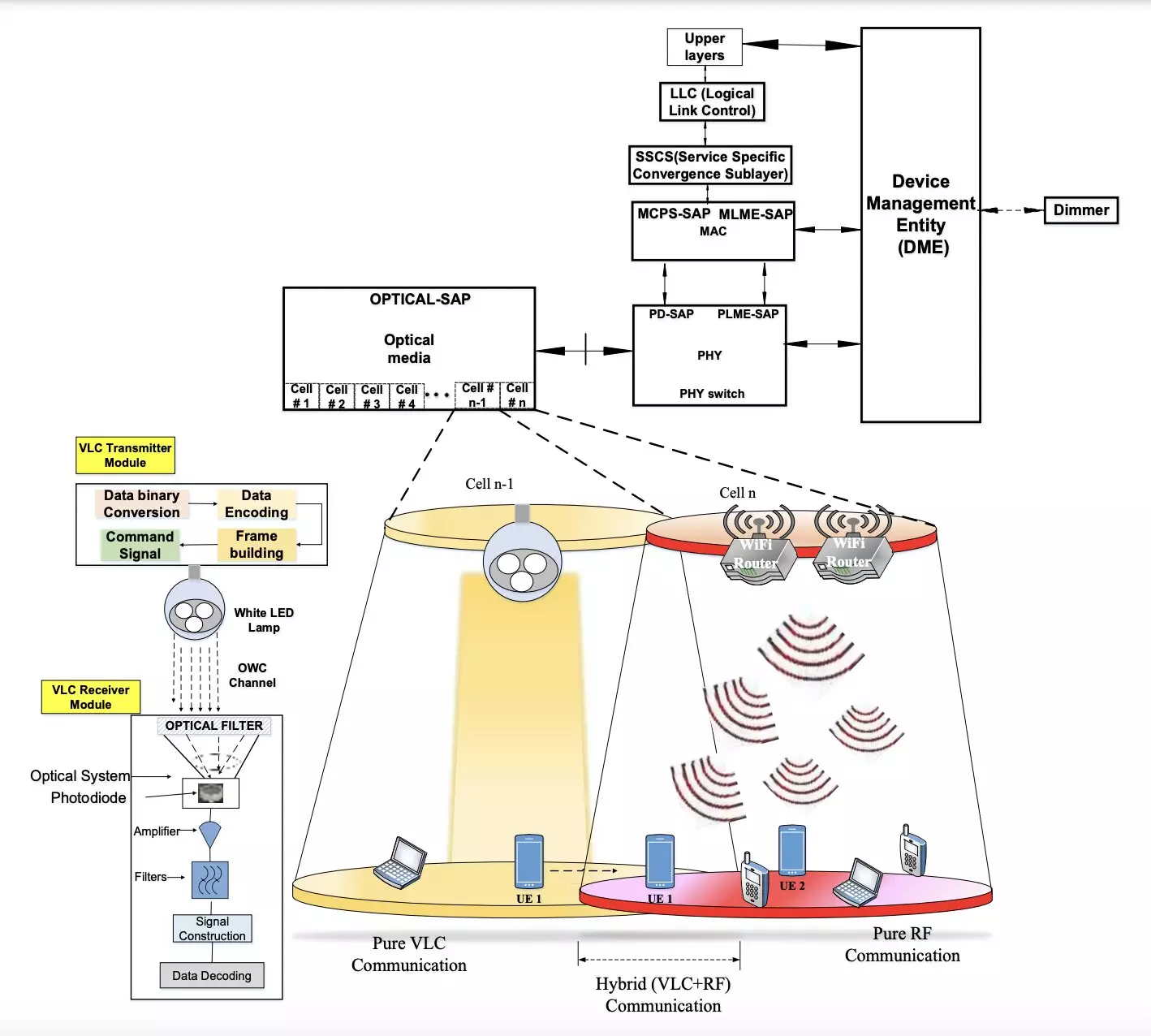Wireless internet has become an integral part of our daily lives, with countless people relying on it for various activities such as communication, browsing the internet, and streaming content. However, the increasing demand for wireless internet access has led to a spike in power consumption, contributing to carbon emissions worldwide. In order to address this issue, researchers have been exploring energy-efficient techniques to support communication between devices and the sharing of information online.
One innovative solution that has emerged is visible light communication (VLC), which leverages visible light to transmit data using light-emitting diodes (LEDs) or other artificial light sources. Recently, researchers at Central University (CU), IIDM, and CU J&K in India have developed a new hybrid approach that combines VLC with RF communication. This hybrid solution, as outlined in a paper published in IEEE Transactions on Green Communications and Networking, aims to enable reliable communication in indoor environments with high data transmission rates while consuming less energy.
The wireless communication system proposed by the researchers consists of two key components: a transmitter and a receiver module. These modules are physically separate but are connected via a VLC channel. The transmitter is responsible for transmitting binary data in the form of LED-produced light, utilizing modulation schemes to maintain a continuous data stream while keeping power consumption at a constant value. On the other hand, the receiver comprises a photo-sensitive device, such as a photodiode or a camera, that can extract information from the light emitted by the transmitter when in its line of sight.
Energy Efficiency and Simulation Results
In their study, Kour, Jha, and Jain evaluated the proposed indoor wireless communication system using various simulation platforms. The results indicated that the system could facilitate stable communication between devices in the same indoor environment while achieving significant energy savings. The researchers compared RF communication, the hybrid (RF+ VLC) approach, and pure VLC, demonstrating that their proposal achieved high energy efficiency, lower Specific Absorption Rate (SAR), decreased power density, reduced complexity, and minimized temperature elevation in human body tissues exposed to radiation. Furthermore, the hybrid system was shown to enhance the battery lifetime of mobile devices by approximately 7 hours.
The study by Kour, Jha, and Jain represents a significant contribution to ongoing efforts to reduce power consumption and electromagnetic radiation in wireless communications. The initial simulations conducted by the researchers highlight the potential of their hybrid approach, which could be further optimized and tested in future studies.
The development of energy-efficient wireless communication systems, such as the hybrid approach combining VLC with RF communication, represents a promising solution to the growing demand for wireless internet access while addressing environmental concerns associated with increased power consumption. The research conducted by Kour, Jha, and Jain provides valuable insights into the potential benefits of such innovative approaches, paving the way for more sustainable and efficient wireless communication technologies in the future.


Leave a Reply